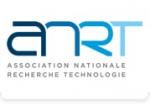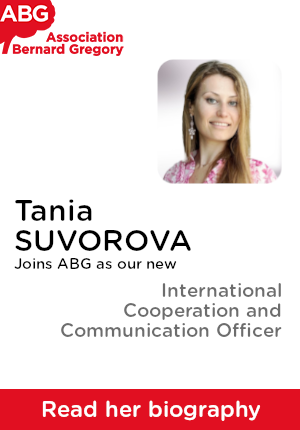Cluster dynamics modelling of irradiated microstructures: application to long-term prediction of swelling in 304 steels PWR conditions
| ABG-134060 | Thesis topic | |
| 2025-10-28 | Public/private mixed funding |
- Materials science
Topic description
The internal components of Pressurized Water Reactor (PWR) vessels made of austenitic stainless
steel are subjected to high neutron fluxes. This neutron irradiation produces a large quantity of defects
(vacancies, self-interstitials and their clusters), which agglomerate to form dislocation loops and cavities,
and may also affect other features such as precipitates. Cavities are responsible for an isotropic change
of dimensions called swelling, which may be detrimental to the safe operation of reactors.
It is now acknowledged that the risk of significant swelling occurring at 60 years in Western PWR
is very low, but the elementary mechanisms leading to swelling are not completely known. In the
perspective of long-term operation of nuclear reactors, it is necessary to evaluate the swelling risk for
doses corresponding to 80 years. Predictive simulation tools, taking into account all identified physical
mechanisms involved in cavity growth, are therefore currently developed. Among them, cluster
dynamics is particularly suitable, as it finely describes the evolution of clusters and permits to reach high
doses [1].
Cluster dynamics has been successfully used to understand the impact of Helium on swelling in
316 steels in PWR conditions [2], but on some aspects the physical basis of the various models involved
must be improved. Among these, it is well known that elastic interactions between diffusing clusters
have a large influence on the resulting microstructure, but such effects have not been included in
models so far.
The goal of this PhD work is to improve the description of cluster interactions in cluster dynamics
models, using calculations at lower scale. For this purpose, molecular dynamics (MD) calculations will be
performed to assess atomic processes driving cluster interactions and determine elastic and migration
properties of clusters produced under irradiation. Since times reached by MD is limited, an
object kinetic Monte Carlo model, including elastic interactions between clusters [3], will be
parametrized and validated on MD results and used to derive new expressions of sink strengths for
cluster dynamics. Finally, the cluster dynamics model will be used to estimate the swelling kinetics with
the newly implemented expressions.
[1] T. Jourdan, G. bencteux and G. Adjanor, “Efficient simulation of kinetics of radiation induced defects:
A cluster dynamics approach”, J. Nucl. Mater. 444, 298 (2014)
[2] M. Fokt, G. Adjanor, J. Joubert, T. Jourdan. "Modeling the evolution of microstructure under
irradiation and swelling in internal structures of reactors". FONTEVRAUD 10 (2022).
[3] T. Jourdan. "Object kinetic Monte Carlo modelling of irradiation microstructures with elastic
interactions". Modelling and Simulation in Materials Science and Engineering 30 p.085013 (2022).
Starting date
Funding category
Funding further details
Presentation of host institution and host laboratory
The PhD work will be mainly performed in the Institute P’ (CNRS, Poitiers, France). It will be supervised
by Laurent Pizzagalli (Institute P’, CNRS) and Thomas Jourdan (CEA Saclay), and in close collaboration
with Gilles Adjanor (EDF). Intitute P’ and CEA Saclay are internationally renowned materials science
laboratories, and EDF is a major actor of nuclear R&D. Interactions with the group of L. K. Beland at
Queen’s University (Canada) are planned during the PhD, with a possible on-site stay for the candidate.
Website :
Candidate's profile
- Condensed matter physics, physical metallurgy (defects, dislocations)
- Good programming skills (Fortran or C, Python). Being familiar with operating Linux through
command line would be better for the work on high performance computing environment
(“clusters”)
Vous avez déjà un compte ?
Nouvel utilisateur ?
Get ABG’s monthly newsletters including news, job offers, grants & fellowships and a selection of relevant events…
Discover our members
 Servier
Servier  Aérocentre, Pôle d'excellence régional
Aérocentre, Pôle d'excellence régional  Groupe AFNOR - Association française de normalisation
Groupe AFNOR - Association française de normalisation  SUEZ
SUEZ  ONERA - The French Aerospace Lab
ONERA - The French Aerospace Lab  Institut Sup'biotech de Paris
Institut Sup'biotech de Paris  Laboratoire National de Métrologie et d'Essais - LNE
Laboratoire National de Métrologie et d'Essais - LNE  Medicen Paris Region
Medicen Paris Region  TotalEnergies
TotalEnergies  ADEME
ADEME  Généthon
Généthon  Tecknowmetrix
Tecknowmetrix  Nantes Université
Nantes Université  ASNR - Autorité de sûreté nucléaire et de radioprotection - Siège
ASNR - Autorité de sûreté nucléaire et de radioprotection - Siège  ANRT
ANRT  Nokia Bell Labs France
Nokia Bell Labs France  Ifremer
Ifremer
-
JobRef. 134840La Seyne-sur-Mer , Provence-Alpes-Côte d'Azur , FranceIfremer
Chercheur Postdoctoral Ecologie Marine Contamination Microplastiques H/F
Scientific expertises :Ecology, environment - Biology - Chemistry
Experience level :Confirmed
-
JobRef. 134756ANGERS , Ile-de-France , France
 ESEO
ESEOENSEIGNANT.E EN EN INFORMATIQUE / INTELLIGENCE ARTIFICIELLE (F/H)
Scientific expertises :Computer science - Mathematics - Digital
Experience level :Any


